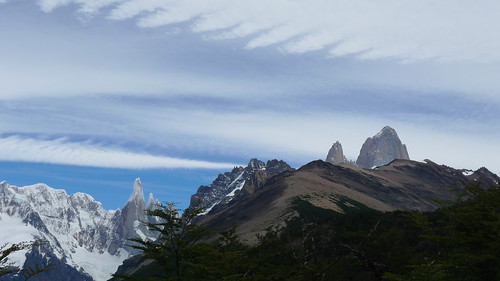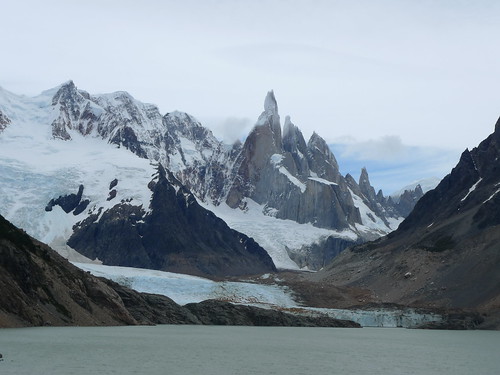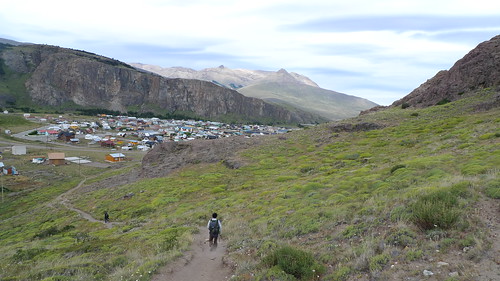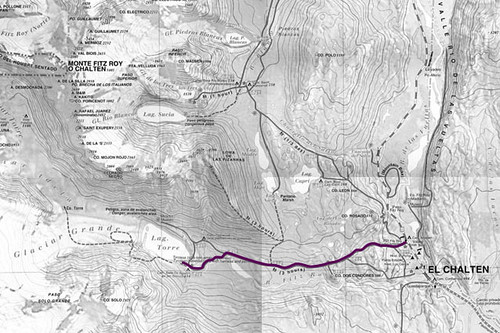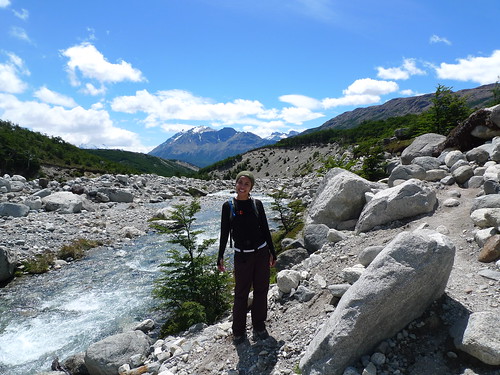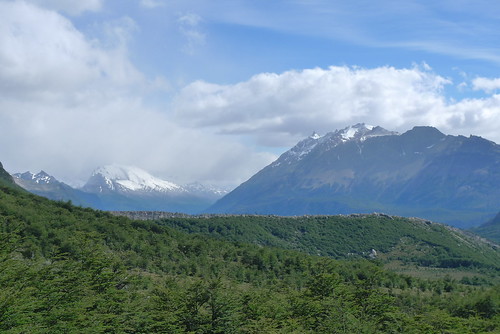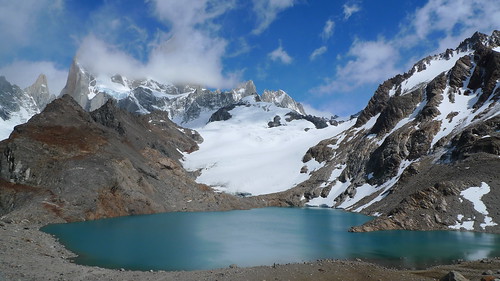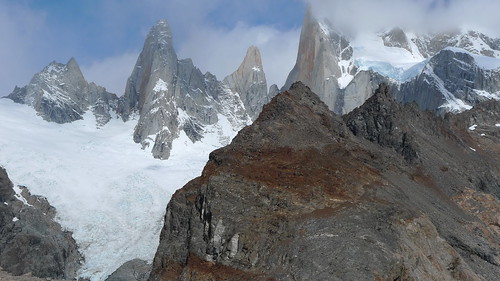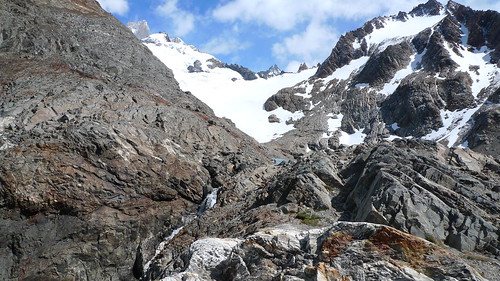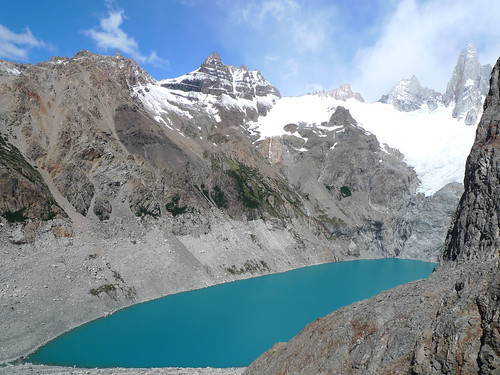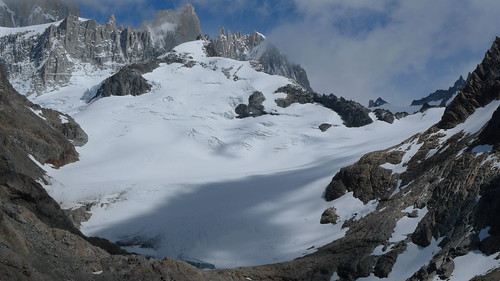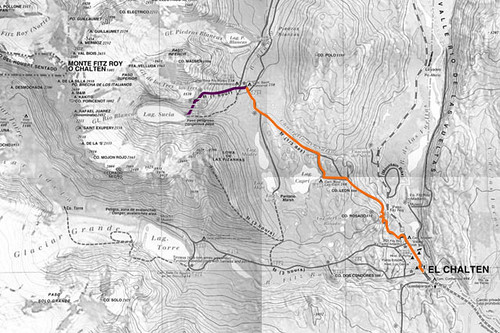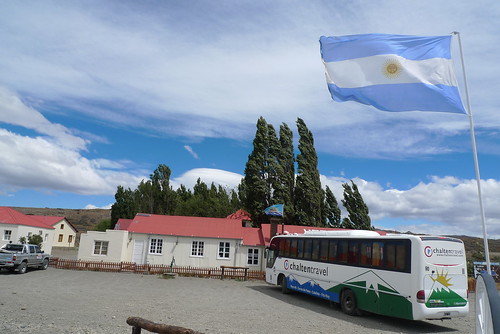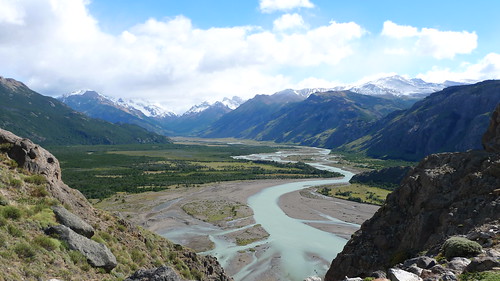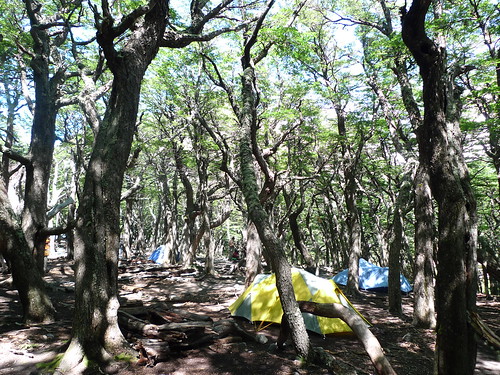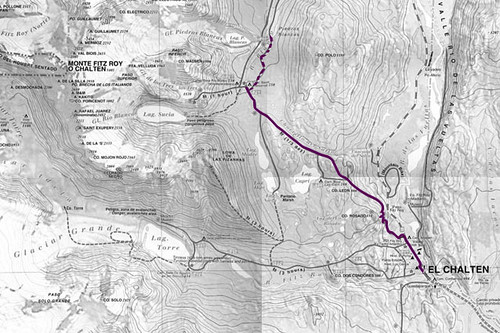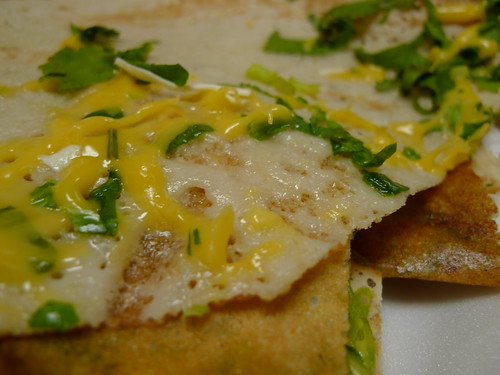After hauling aSs down from Camp Poincenot yesterday, G’s foot started to hurt; he opted out of today’s hike. The three of us start our longest hike this week via the path behind the Cerro Torre Hotel in El Chalten. We feel more energized after yesterday’s shower and last night’s sleep on real beds. I am ready to take it easy with just a day pack even though the hike is longer than the others.
After an unmarked steep hill, we hike through a forest. The trees are dry and sharp, like from a Tim Burton movie. The earth itself is very thin and dusty. The ranger the other day told us that this hike is where you can view Cerro Torre and Monte Fitz Roy together, but it’s not worth doing if visibility is zero. A lot of people hike El Chalten and miss the chance to see them at once because of the finicky weather, but it’s looking like we will be very lucky today. I hold my breath.
The hike takes forever and the landscape change from forest to uphills to dry marsh to another forest and then to large rocks. There are a lot of yellow flowers low on the ground which is what I pretty much imagined seeing before getting here. We pass by a swamp with thorny trees before we start walking along the Rio Fitz Roy. Cerro Torre shows itself early and I’m delighted that, although there is a watercolor-like smear of white above it, everything else looks clear blue. We take a turn towards the viewpoint and Monte Fitz Roy also says hello.
So this is what the ranger and the others before us have been talking about. I notice that there is more snow on the Cerro Torre side than on Fitz Roy’s. As soon as we go through the flat plains, the wind immediately picks up and the three of us put on our jackets. It’s like being in a wind tunnel: you push an invisible force forward without looking at where you’re going and you try to block your face from being completely blown away. The gravel makes it even harder to ascend up the hill that reveals Lago Torre.
But oh, as soon as I get to the top, it’s like being transported to a different land; a different country. The wind is howling and there is a heavy feeling about it. It looks like something scary is about to happen, as if there was already a story before time began. I notice right away that Cerro Torre is thinner, spikier and angrier than Monte Fitz Roy. The tips of each spire has a mushroom cap of ice because of the Pacific storms that blow from the Patagonian Ice Cap.
In 1959, Cesare Maestri and Toni Egger supposedly reached the summit, but inconsistencies in Maestri’s account made other climbers doubtful. Egger died in an avalanche during that attempt, and the second tallest spire was named after him, but it left Maestri’s account unverified. In 2005, a confirmed route was put up on the face that Maestri claimed to have climbed by Ermanno Salvaterra, Alessandro Beltrami and Rolando Garibotti. It was only a year ago, in January 2008, when the same Garibotti, with American Colin Haley, climbed Aguja Standhardt, Punta Herron, Torre Egger and Cerro Torre together, accomplishing the first complete traverse of the entire massif with a 7,200-feet total vertical gain.
I feel like a wimp again as we go down the path and to the safe confines of Camp D’Agostini just below it. I try to imagine those who have climbed Cerro Torre to give the sport a good name and people like me a glimpse of the impossible becoming possible. We settle and eat our last camp-style lunch before we begin to head back down to El Chalten.
On the way back, I get to enjoy the view I missed on the way. The river doesn’t look so rapid from this far away and everything around me looks more like the Swiss Alps than Patagonia. I pause after I say this to the Dr. and add, What I imagine Switzerland to look like anyway, because I’ve never been there. Funnily enough, our friend commented of our last trail during dinner: That looked like the time I was in Switzerland.
All that eerie feeling is replace by the Sound of Music. All of a sudden, there are white blossoms and Alpine-style cabins. The starkness of Cerro Torre that’s in my head becomes more manageable and transforms into a panoramic photograph featured on calendars. I can’t say that I like it better, but it certainly makes the end of our Chalten hike more pleasant.
Day 3 itinerary:
Related post/s:
Cerro Torre photos on Flickr
Day 2: Hiking to Lago de los Tres and Laco Sucia
This is great story on Maestri and Cerro Torre
Here’s the stupendous account of Garibotti and Haley
Photos that make me shiver from Ermanno Salvaterra

